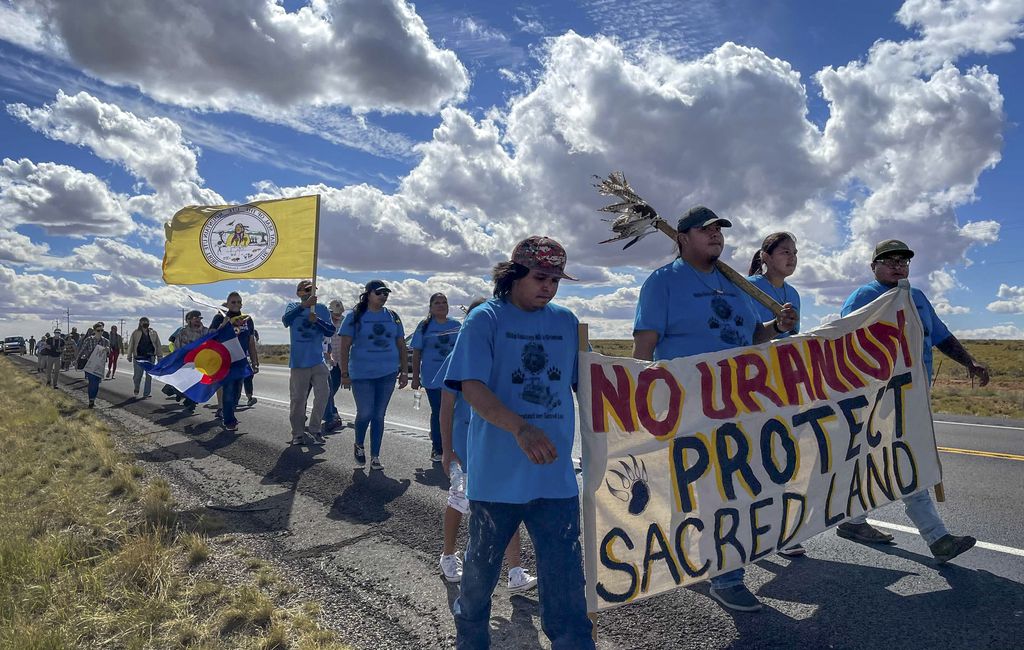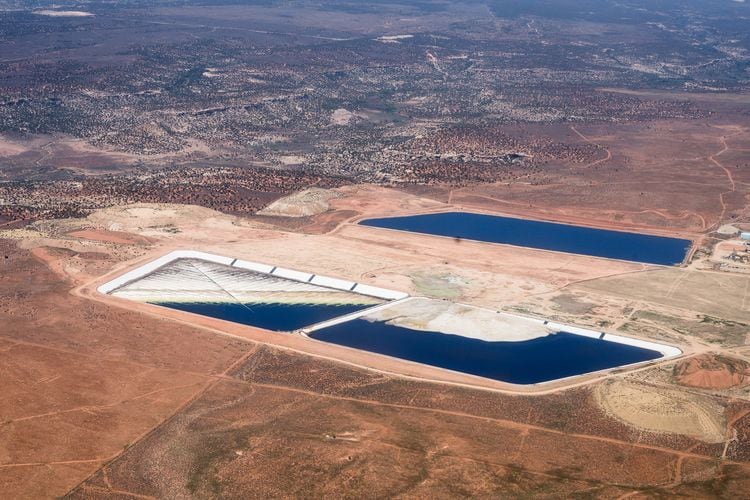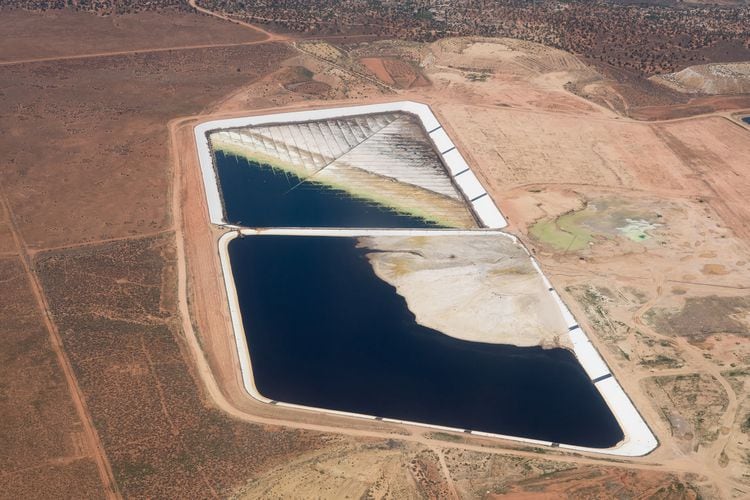Energy Fuels Resources barred from accepting some radioactive material after federal authorities conclude the White Mesa facility has not been properly storing dangerous waste.

The Environmental Protection Agency (EPA) last week ordered a halt to deliveries of waste from Superfund sites to a Utah uranium mill in San Juan County after determining its impoundment had not been operated properly, potentially resulting in excessive radon emissions.
But the mill’s operator, Energy Fuels Resources, contends the order was the result of a mix up within the EPA and that the waste-handling facility at White Mesa outside Blanding has been operating safely.
“There is no violation, much less an ‘egregious’ one,” said company spokesman Curtis Moore.
The White Mesa facility is better known as the nation’s last operating uranium mill, but it also stores dangerous waste from out-of-state cleanups. This waste often contains trace amounts of uranium and vanadium that Energy Fuels can extract by reprocessing the material. It also can emits radon, a radioactive gas that can cause lung cancer.
Keeping the waste covered in liquid reduces its radon emissions by a factor of 10, according to a Dec. 2 letter the EPA sent to Energy Fuels CEO Mark Chalmers.
Signs of trouble surfaced in October when High Country News posted aerial photos of the storage cells, showing one with most of its contents exposed. The Utah Department of Environmental Quality then notified the company that exposed waste in one of White Mesa’s 40-acres cells could constitute a violation of the Clean Air Act.

The notice was forwarded to the EPA, which concluded the uncovered material the cell contained was indeed a violation that had persisted since at least May 2020, the letter said. Accordingly, the White Mesa mill is no longer an acceptable place to dispose of Superfund waste “due to the egregious nature and duration of the violation” effective immediately, wrote an EPA official named Janice Pearson, who heads an enforcement branch in the Denver regional office.
The letter came as a surprise to Energy Fuels, which had been sending EPA photos of the cells every week, according to Moore.
“Over the past few months, we are in ongoing discussing with the State of Utah and other offices within the EPA on this exact issue, including detailed scientific and technical analyses,” Moore said. “This all looks like a big misunderstanding to us, and we’ll get to the bottom of it. No state or federal agency has determined that there is a violation on this issue, there is no added risk to the public as the radon levels in our tailings are actually five times below applicable limits.”
Energy Fuels, which also operates uranium mines in Utah and Arizona, has have long drawn criticism from tribal leaders, Indigenous activists and environmental groups who fear continued uranium mining and milling carry environmental and public health consequences. Concerns have increased in the past few years with Energy Fuels’ growing interests in importing radioactive material from abroad, producing rare earth metals and processing tailings from abandoned mines on the Navajo Nation.
“The mill’s ownership has been touting their commitment to clean energy, green jobs and community benefits, but all the while they’ve been in open violation of EPA rules, with exposed waste emitting 10 times the cancer-causing radon that it should be,” said Tim Peterson of the Grand Canyon Trust. The environmental group, along with the Ute Mountain Ute Tribe whose members live only a few miles from the mill, has long challenged Energy Fuels’ operations spread across the Colorado Plateau.
The tribe has sought, without complete success, to block Energy Fuels from taking waste from out-of-state Superfund sites. According to Scott Clow, the tribe’s environmental program manager, the problem with the exposed waste dates back to at least 2017. By regulation, this material should be kept under a meter of liquid, he said.
But in 2019, while the EPA was run by the former President Donald Trump administration, the agency issued a formal determination at Energy Fuels’ request exempting the crystalline waste that accumulates in the cell from this rule.

Now the EPA contends there are materials present that must be covered in liquid. The new order halts shipments to the mill from a Superfund site in Washington state known as the Midnite Mine, which Utah regulators have allowed since 2014.
“We agree with it wholeheartedly,” Clow said. “They can’t violate their permits and laws and still be suitable for the offsite rule. It says so right in the law.”
Moore, Energy Fuels’ spokesman, said processing Superfund waste is a small share of the company’s operations, so this month’s order won’t have much of an impact on its business. But regardless, it was issued in error, he alleged.
“It’s one little office in the EPA that went outside the normal chain of command,” Moore said, and added that “calling this an ‘egregious’ violation is a little outrageous honestly.”
The waste stored in White Mesa’s cell 4B precipitates into a crystalline substance that is largely stable and puts off very little radon, as opposed to the dusty tailings that are stored in White Mesa’s other cells, according to Moore.
“No one from the EPA has done any inspections, testing or analysis of the crystals in the pond. So, if they are questioning whether the material in that pond are ‘crystals’ or ‘solids’ or something else, they’re not making that determination based on anything scientific,” he said. “Without analysis, it is impossible to determine what that material is or what the radon emissions are.”
According to the EPA’s Dec. 2 letter, however, not all the exposed materials in the cell are these less-dangerous crystallized material.